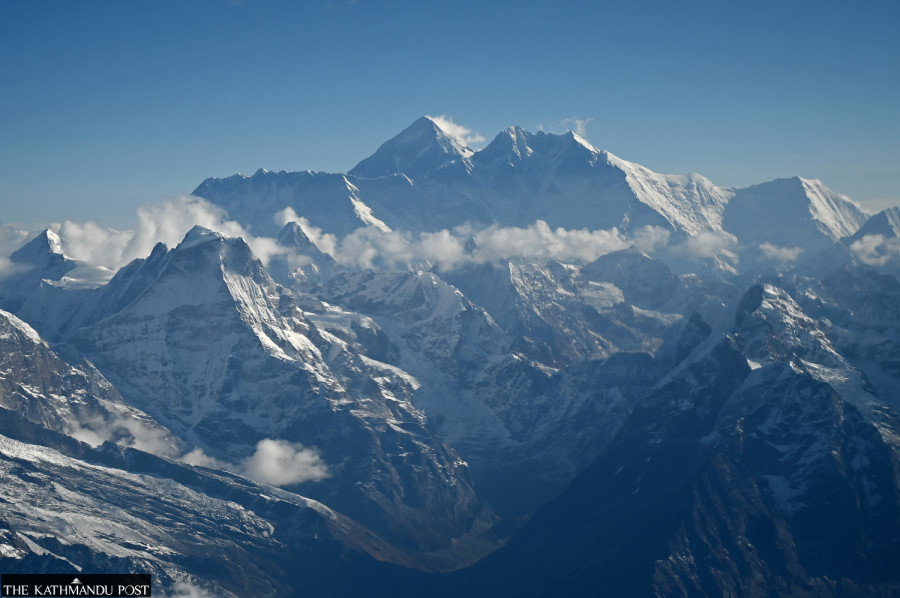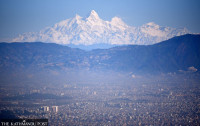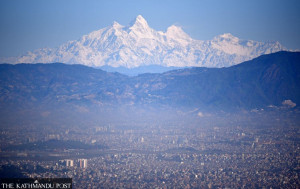Climate & Environment
Sagarmatha Sambaad ends with urgent call to save the mountains
In Kathmandu, Himalayan nations propose a climate fund that supports green growth and climate resilience.
Purushottam Poudel
The inaugural edition of the Sagarmatha Sambaad concluded in Kathmandu with the adoption of the ‘Sagarmatha Call for Action’—a comprehensive and urgent appeal to the international community to address the escalating climate crisis, with an emphasis on the world’s mountain ecosystems.
Minister for Foreign Affairs Arzu Rana Deuba announced the conclusion of the three-day event by releasing a 25-point declaration titled the ‘Sagarmatha Call for Action.’
On the occasion, Minister Deuba stated that the Sagarmatha Sambaad had been successful in raising voices about the challenges posed by climate change, from the mountains to the islands. She stressed the need for collective efforts to implement the outcomes of the dialogue and to achieve tangible results.
Held under the theme “Climate Change, Mountains and the Future of Humanity,” the discussion brought to the fore the growing vulnerability of mountain ecosystems to global warming. It emphasised the role played by such ecosystems in sustaining the planet’s health. With glaciers in a state of alarming melt, stakeholders stressed that impacts of climate change extend far beyond the highlands — with hydrological upsets and loss of biodiversity plus intensification of natural disasters extended to lowland and coastal regions.
The Sagarmatha Call for Action reaffirmed an international pledge to key global agreements, including the United Nations Framework Convention on Climate Change, the Paris Agreement, and the 2030 Agenda for Sustainable Development. It underscored the need to maintain the rise in global temperatures at 1.5 degrees Celsius over pre-industrial levels, with calls for accelerated action in reducing emissions, enhancing climate adaptation, addressing loss and damage, and providing fair financial support to developing and climate-vulnerable nations.
“We have successfully concluded the three-day event,” Minister Deuba said at the concluding session. “The discussions held on climate change, mountains, and the future of humanity were truly historic.”
Highlighting the importance of collective efforts to implement the conclusions of the Sagarmatha Sambaad and to realise its intended objectives, Minister Deuba described the dialogue not simply as an event, but as a meeting of minds and a celebration of shared responsibility.
She remarked, “Just as Sagarmatha rises high as a symbol of our resilience, may the outcomes of this dialogue serve as a reminder of our enduring commitment.”
The minister also stated that the issues and recommendations raised during the dialogue would be presented at several international platforms, including the upcoming High-Level International Conference on Glacier Conservation in Tajikistan later this month, the 80th session of the United Nations General Assembly, and the COP30 UN Climate Change Conference in Brazil later this year.
The declaration includes strong commitments to protecting the Himalayas, promoting green technologies, providing concessions and financial support to developing countries, and advocating for climate justice.
Foreign affairs experts note that while the Sambaad has played a positive role in sensitising the global community to the impacts of climate change and in advocating for the seriousness of the issue, effective implementation would be a challenge.
“The first step towards implementing our declaration begins with our neighbouring countries,” said former foreign secretary Dinesh Bhattarai. “The effectiveness of its implementation can largely be measured on the level of representation from neighbouring and other participating countries, and how the issues raised here are conveyed to their respective governments.”
Otherwise, it will be like putting up a roof without laying the foundation, Bhattarai said.
Climate change experts observed that the outcomes of the Sambaad largely reiterated commitments already made at various international forums. According to them, the 25-point Sagarmatha Call for Action announced from Nepal has not gone beyond the decade-old challenge of addressing the issue of glacier melt.
In recent times, climate-induced migration in Nepal’s Tarai and hill regions has taken on new and concerning forms, yet such issues were not adequately addressed in the dialogue or reflected in the commitments outlined in the declaration.
“In the past three years, certain areas of western Karnali have experienced no winter rainfall, and similar patterns have recently begun to emerge even in Kathmandu,” said Madhukar Upadhya, an expert on climate change. “However, these pressing concerns were overlooked in the Sagarmatha Sambaad, as the focus centred on the issue of glacial melt.”
Upadhya notes that the real challenge lies not in organising such events, but in implementing the conclusions that emerge. In his view, if the commitments made are not followed through, this initiative risks meeting the same fate as the Cabinet meeting held at Kala Patthar in the Everest region over a decade ago and the subsequent 10-point Sagarmatha Declaration, which ultimately was shelved.
In December 2009, in a symbolic gesture aimed at drawing global attention to the impacts of environmental change, the Government of Nepal held a Cabinet meeting at Kala Patthar, located at an altitude of 5,242 metres near the Everest Base Camp. This high-altitude meeting conveyed a collective commitment to addressing climate change.
Following the meeting, then-prime minister Madhav Kumar Nepal issued a 10-point Sagarmatha Declaration during a press meet held at Syangboche. The declaration included commitments to raising awareness about climate change, expanding protected areas, and fostering collective action to combat its impacts.
It also pledged to protect vulnerable mountain ecosystems, raise awareness among poor, Dalit, indigenous, and marginalised communities about climate change, and enhance the capacity of information and communication technologies to support climate action.
Meanwhile, the Sagarmatha Call for Action put strong emphasis on the need for united global efforts to foster a green economy, while advocating for the expansion of dialogue surrounding mountain ecosystems.
It drew attention to the necessity of strengthening early warning systems for natural disasters, in light of the growing threats posed by climate change — including floods, droughts, landslides, and rising sea levels.
Among the key proposals was the establishment of a dedicated climate fund for Himalayan nations, aimed at improving access to climate finance and encouraging increased private sector investment.
The declaration also highlighted the deep injustices faced by Himalayan communities, who remain among the most affected by climate change despite their negligible contribution to global greenhouse gas emissions. It called for climate justice and urged the meaningful inclusion of local communities, indigenous peoples, women, youth, persons with disabilities, and the elderly in all aspects of climate action.
The development of payment mechanisms for ecosystem services was also underscored, as a means to recognise and reward the environmental contributions of mountain regions.
As part of its long-term vision, the Sambaad committed to establishing a multi-stakeholder international forum and knowledge hubs centred on the Himalayas, with the goal of amplifying the voices of mountain communities in global climate discourse.
The next edition of the Sagarmatha Sambaad has been scheduled for 2027.




 19.12°C Kathmandu
19.12°C Kathmandu











